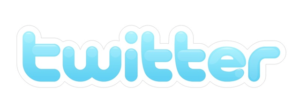A recent study by J.D. Power and Associates cites that poor social media practices can negatively affect a businesses’ bottom line and brand image.
The study’s results were released this week:
J.D. Power and Associates Reports:
Poor Social Media Practices can Negatively Impact a Businesses’ Bottom Line and Brand Image
WESTLAKE VILLAGE, Calif.: 14 February 2013 — Businesses can no longer adopt a trial-and-error approach to social media as all-new research finds a link between social media and business metrics such as consumers’ likelihood to purchase or interact with companies through leading social channels, according to the J.D. Power and Associates 2013 Social Media Benchmark Study, SM released today.
The inaugural study is based on responses from more than 23,200 U.S. online consumers who have interacted with a company via the companies’ social media channel. Fielded from November to December 2012, the study measures the overall consumer experience in engaging with companies through their social platforms for both marketing and servicing needs across more than 100 U.S. brands in six industries: airline, auto, banking, credit card, telecom and utility. The study establishes performance benchmarks and industry best practices that provide insights to companies to help them maximize their social media efforts.
Key Findings
- 67% of consumers have used a company’s social media site for servicing, compared with 33% for social marketing.
- Younger consumers (18-29 years old) are more likely to use brands’ social media sites for servicing interactions (43%) than for marketing (23%).
- The automotive industry balances marketing and servicing engagements better than any other industry included in the study.
- Consumer expectations for social interactions vary across industries, although quality content and responsive service representatives are keys to higher satisfaction levels.
“This is a unique, comprehensive consumer study that defines consumer expectations in the ever-changing social space and measures companies’ performances against those benchmarks,” said Jacqueline Anderson, director of social media and text analytics at J.D. Power and Associates. “This study provides companies with the framework they need to begin effectively integrating social media into their business strategies. It also illustrates the relationship between a positive social media experience and consumer purchase intent.”
Social Media Servicing vs. Social Media Marketing
The study focuses on two types of social media engagements, marketing and servicing, and provides best practices for each. Marketing engagements include connecting with consumers to build brand awareness and affinity, in addition to promoting coupons and deals. Servicing engagements include answering specific consumer questions or resolving problems.
The study finds that social marketing engagements vary by age group. Nearly one-third (39%) of consumers 30-49 years old and 38 percent of those 50 years and older interact with a company in a social marketing engagement context, while only 23 percent of consumers who are 18-29 years old interact with companies. In contrast, 43 percent of consumers who are 18-29 years old use social media for servicing interactions, while 39 percent of consumers who are 30-49 years old use social for servicing needs. Only 18 percent of consumers who are 50 years and older interact with a company via social for a service-related need.
“While there are vast differences among age groups in the frequency of servicing and marketing engagements, there is a consistency in the impact on brand perception and purchase intent through both types of engagement,” said Anderson. “Companies that are focused only on promoting their brand and deals, or only servicing existing customers, are excluding major groups of their online community, negatively impacting their satisfaction and influencing their future purchasing decision. A one-pronged approach to social is no longer an option.”
Companies need to understand how their consumers use social media and then develop a strategy that addresses their usage patterns.
“If your customers want service and you’re pushing discount coupons out to them while ignoring their attempts to connect with you, you’re going to end up with dissatisfied customers,” added Anderson.
The study finds a correlation between overall satisfaction with a company’s social marketing efforts and consumers’ likelihood to purchase and their overall perception of the company. Among highly-satisfied consumers (satisfaction scores of 951 and higher on a 1,000-point scale), 87 percent indicate that the online social interaction with the company “positively impacted” their likelihood to purchase from that company. Conversely, among consumers who are less satisfied (scores less than 500), one in 10 consumers indicate that the interaction “negatively impacted” their likelihood to purchase from the company.
The study also finds that some industries are more successful than others at implementing best practices into their social media engagement strategies than others. When looking across industries, the auto industry performs particularly well in both marketing and servicing social media interactions, the only industry to do so. Other industries performing well are wireless in social servicing interactions and utility in social marketing interactions.
Industry Performance
Listed below are the companies that perform particularly well in each of the industries included in the study. Companies are listed in alphabetical order.
Read More






